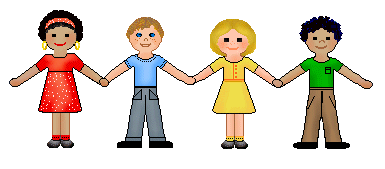I recently viewed a ‘Te Whāriki Early Childhood Curriculum Introductory Workshop’ webinar to get a better understanding of the new document launched on 13 April 2017. I had been following a number of forum comments prior to the launch of the revised and updated curriculum, where there had been a few voices of dissent because the general opinion was that the consultation process was rushed. The webinar itself was dull in presentation which was of no help at all.
Anyhow, my copy arrived and my initial impression at first glance of the revised curriculum is quite positive. I like the fresh new look. The passages that I have read suggest introspective practice to promote the ‘kotahitanga’ or holistic development of the child. Goals and learning outcomes for each strand are well documented for ‘kaiako’ to implement during their daily assessment and practice. Once again the importance of dispositions is highlighted to enable children to develop their own working theories. These are well explained in the document, which I think is a good reference for ‘kaiako’. The term ‘kaiako’ has been frequently used in the current document and there is a section in the curriculum that identifies their responsibilities.
I like the separate chapter in the new curriculum that highlights ‘Pathways to school and kura’ that offers links to the New Zealand Curriculum. This is a point of difference to the 1996 early childhood document and also offers examples by highlighting key competencies in relation to the strands. The new EC curriculum states that, “Kaiako recognise and show where and how children’s early learning connects with the key competencies, values and learning areas of The New Zealand Curriculum and Te Marautanga o Aotearoa” (Ministry of Education, p.58, 2017).
The 1996 document only highlighted Bronfenbrenner’s ecological systems theory in the context of theory in the early childhood curriculum. The 2017 document includes other theories, models, and approaches. These include Māori theorists, Bronfenbrenner’s ecological systems model, sociocultural theorists like Bruner and Vygotsky, and Kaupapa Māori theory. I’m surprised that Piaget wasn’t mentioned at all based on his concepts of discovery learning that we value in Aotearoa. There is also reference to Pasifika approaches, critical theory perspectives, and emerging research and theory. “Neuroscience and studies of gene-environment interaction are providing evidence for how children’s biological foundations interact with specific aspects of the environment during development and how brain development can be nurtured by high-quality early learning environments” (Ministry of Education, p.62, 2017).
The importance of making learning visible through assessment, planning and evaluation has also been emphasised in the 2017 document. There is recognition of older children being able to take ownership of their own learning and, “be included in the planning and assessing of their own journey” (Ministry of Education, p.62, 2017). Assessment, planning, and evaluation is an important process to create an environment conducive to developing lifelong competent learners in the early childhood setting. The purpose is also to identify quality practice where children are able to enhance their learning and that this learning is documented and evaluated. I like the emphasis given to this area of teaching practice as it encompasses a holistic approach to documentation in consistency with the principles of Te Whāriki.
In conclusion, I find the 2017 curriculum document examines and offers guidelines to the holistic development of infants, toddlers, and young children. My first impressions remain positive and I feel that this is a document I can work with to ensure best and reflective practice as I assess, plan, and evaluate in an early childhood environment. However, the new document is also prescriptive in a way. It tells you how to compile evidence and documentation of children’s learning, based on whether they have achieved prescribed learning outcomes. I’m in two minds about ticking the boxes that the curriculum suggests kaiako do to evaluate learning. As I progress with my own method of assessment, planning, and evaluation of tamariki in conjunction with the new 2017 publication, I will arrive at my own conclusion as to how prescriptive I find this new curriculum framework to work with in documenting and providing evidence of children’s learning and development in my daily practice.
Reference
Ministry of Education. (2017). Te whāriki: He whāriki mātauranga mō ngā mokopuna o Aotearoa: Early childhood curriculum. Wellington: Ministry of Education.
